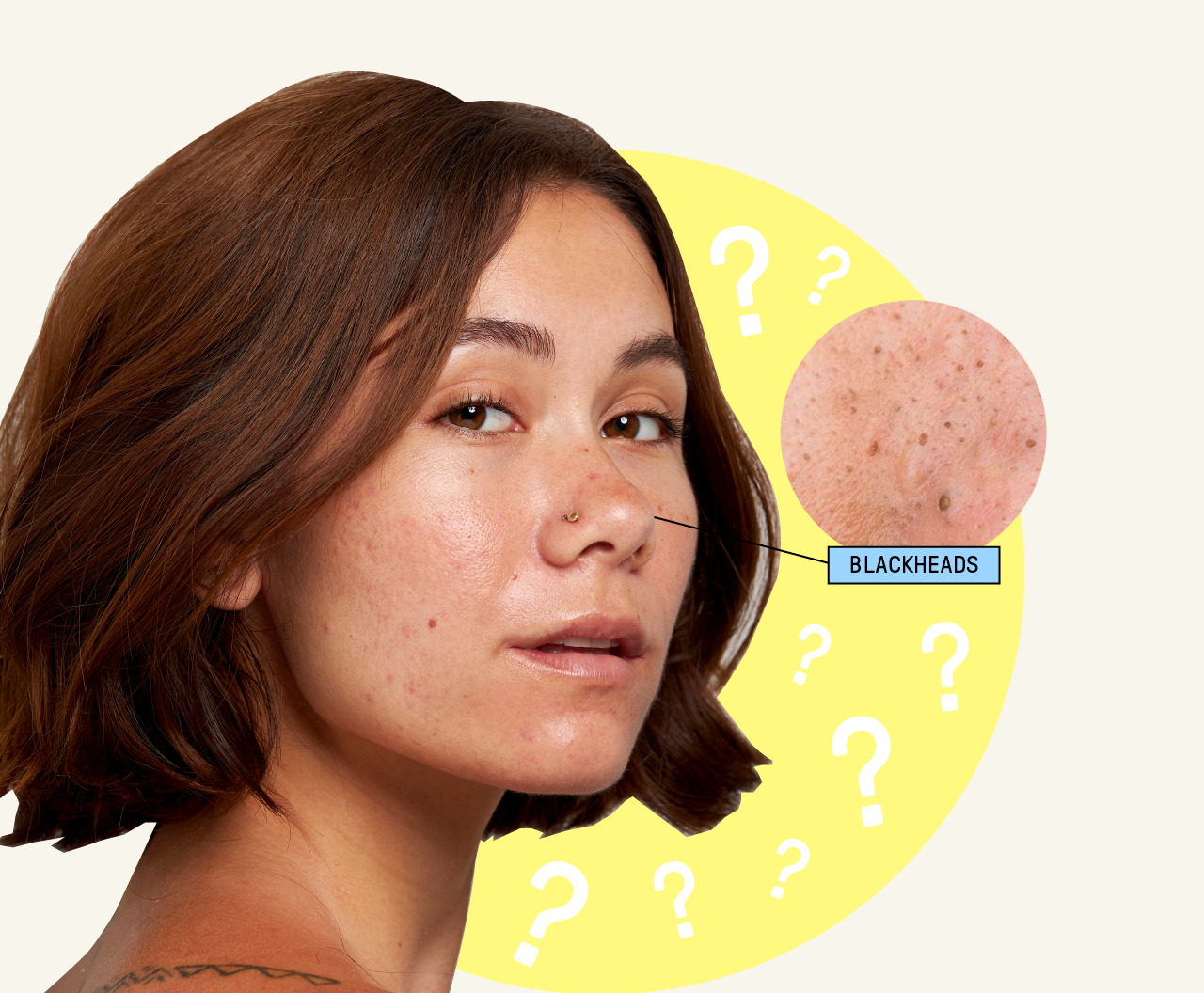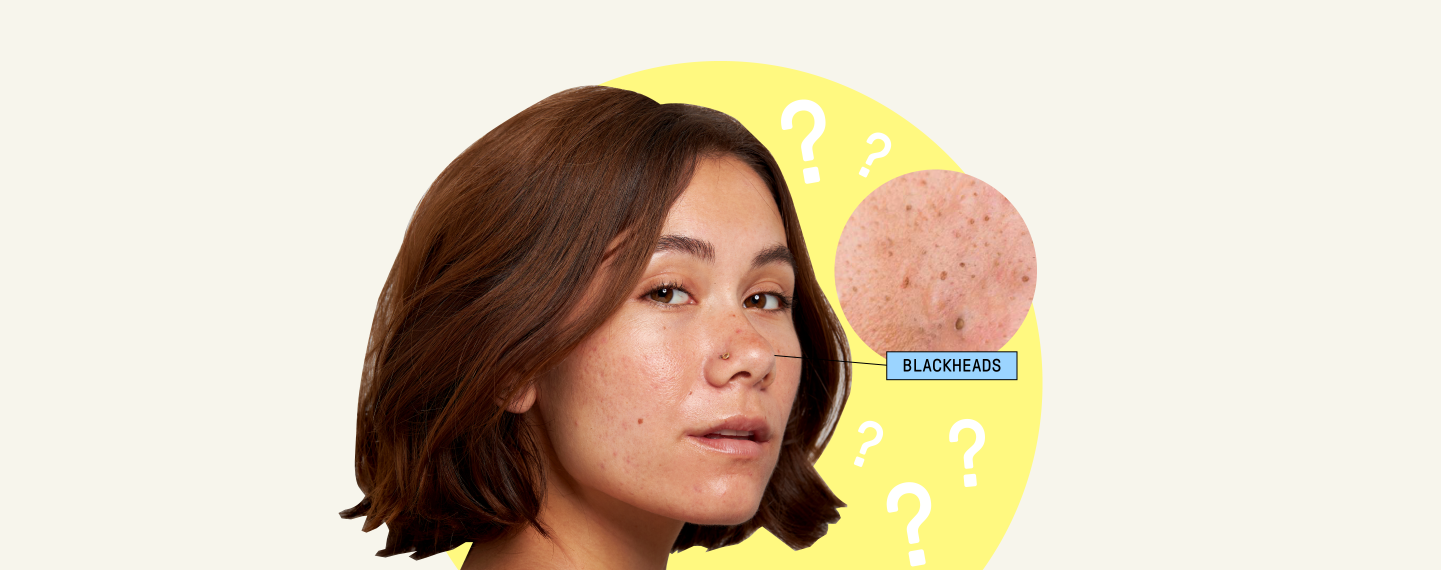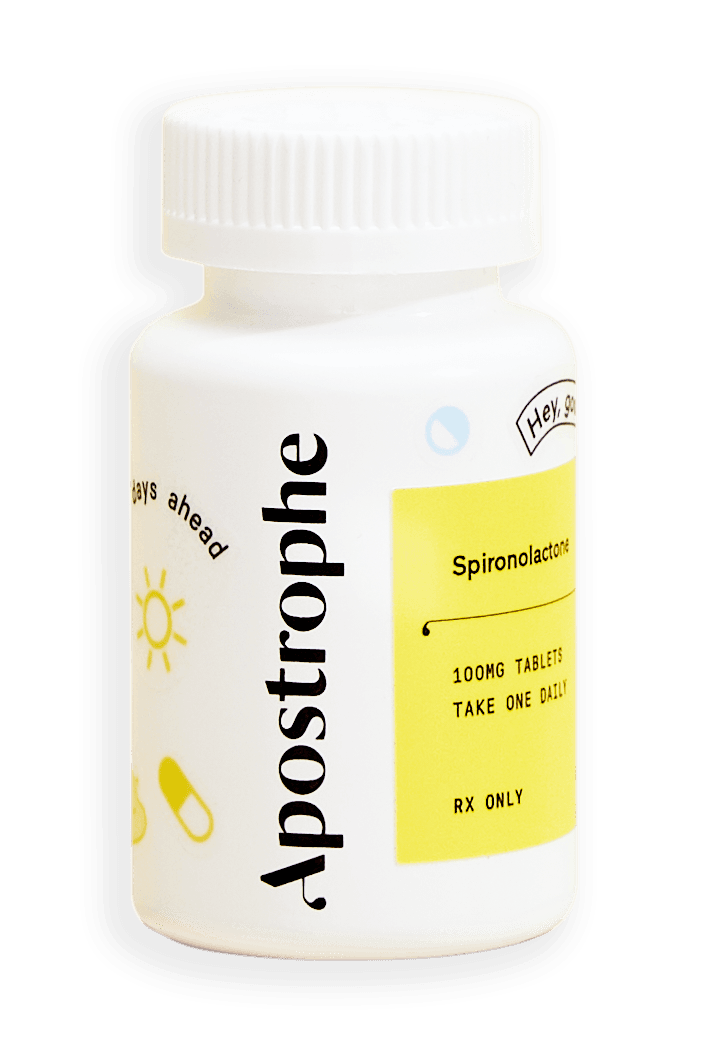Deep Dives
Are The Clogged Pores On Your Nose Actually Blackheads?


SHARE
Deep Dives
Are The Clogged Pores On Your Nose Actually Blackheads?
Medically reviewed by Aimee Paik, MD
Written by Annie Lam
Last updated 8/4/2024
When you ask someone what their biggest skin concern is, some of the most common answers are acne, dark spots, and clogged pores on their nose.
Clogged nose pores are among the top skin concerns that people experience. In fact, some related Google searches are "massive blackheads on nose" and "popping blackheads" (which you definitely shouldn't do).
If you're tired of those enlarged nose pores, read on to learn more about what these clogged pores are and how to treat them.
Are these clogged pores considered blackheads?
Believe it or not, what you may consider a "nose blackhead" or "blackhead on nose" is probably just a regular pore. Some pores on the nose may appear darker due to oxidized sebum, but these are actually called sebaceous filaments, not blackheads.
"Sebaceous filaments are cylindrical tubes of whitish-yellowish color" that are commonly found in the t-zone area of the face. These actually help to bring sebum to the surface of the skin - which is a good thing! This sebum helps to create a protective layer to keep bacteria and debris out of your skin pores and to lubricate your skin.
Sebaceous filaments typically aren't very noticeable on the skin. However, they can seem more visible when oxidized, which makes them look dark or black.
What's the difference between blackheads and sebaceous filaments?
Now that you know those "big blackheads" on your nose are actually sebaceous filaments, let's talk about what the differences are:
- Blackheads are a type of acne that is caused by pores being clogged by dead skin cell build up and excess oil. Sebaceous filaments are a natural part of your skin structure.
- Blackheads are "plugged" at the top of an enlarged pore, but sebaceous filaments have no plug.
- Blackheads are raised bumps on the skin. If you close your eyes, you can feel them as you run your finger along your skin. Normal pores will be flat and cannot be felt. Skin pores can be filled with sebaceous filaments, a normal skin structure.
Can you change the size of your pores?
Sebaceous filaments are a normal part of a healthy skin structure, and unfortunately, you can't really change your pore size. Just like your skin type, the size of your pores is largely due to genetics. It's important to remember that pores are completely normal and a natural part of your skin.
An instance where you may have a temporary large pore size is when your skin overproduces sebum. This can fill up the sebaceous filament and make a clogged pore look larger.
While we know the idea of having large pores can be frustrating, balancing the overproduction of sebum can help minimize the appearance of your pores.
How to treat clogged pores on your nose
As mentioned earlier, you can't really change the size of your pores. However, balancing your oil production can help prevent them from looking larger than they actually are.
Wondering how to clean nose pores? First of all, having larger pores doesn't mean that your skin is dirty. A lot of people believe that using products like a charcoal mask, clay mask, or nose strip/pore strip are the best way to clear out your pores. While these are commonly found on the market, they can be very drying and stripping on the skin.
Have the urge to start popping blackheads? We know that it can be tempting, so if you choose to extract your clogged pores, it’s important to be very gentle. Gentle yet firm downward pressure can help extract the clogged pore. However, if the clogged pore is not coming out easily, stop to avoid causing trauma to the skin. You can also visit a dermatologist or esthetician for professional extractions.
If you prefer not to get them extracted, dermatologists recommend using clinically proven ingredients like tretinoin to help keep congested skin and clogged pores at bay.
Derm-approved treatment options for clogged pores
Some great treatments for minimizing the appearance of sebaceous filaments are:
- Salicylic Acid: Salicylic acid is a beta-hydroxy acid that is oil-soluble. This allows it to penetrate deeper into the oil gland to unclog pores and remove excess oil and sebum. It can also help treat mild acne prone skin by removing dead skin cells.
- Tretinoin: Tretinoin is a topical retinoid that helps to resurface the skin and unclog pores. It is the most effective topical treatment for clogged pores and helps to remove excess dead cell buildup at the surface of pores. It is helpful for all severities of acne.
- Spironolactone: Spironolactone is a hormonal acne treatment that is available in oral and topical forms. It helps to balance oil production, reducing the amount of sebum being produced inside your pores. It can also help to prevent clogged pores by reducing the effect of testosterone on your skin.
- Niacinamide: Niacinamide is a form of vitamin B3 that also helps to balance oil production and support your natural skin barrier. It’s a great ingredient when used in combination with other active ingredients to minimize irritation and sensitive skin.
Overall, there are lots of treatments for clogged pores, but we believe that regular chemical exfoliation with proven topical ingredients is a great option to help keep pores clear.
Get treatment for clogged pores with Apostrophe
Whether you're looking to treat clogged pores, a mild acne scar, or face breakouts, Apostrophe has you covered. Through Apostrophe, you'll receive access to customized treatment crafted by an expert dermatology team - all from the comfort of your own home!
All Apostrophe treatments are custom-compounded with science-backed ingredients to effectively treat your skin concerns. So if you're struggling with hormonal acne, body acne, or stubborn clogged pores, the experts on our platform are here to help. Get started on your skincare journey today!
Sources:
Shop this post

Oral Spironolactone

Topical Spironolactone

Tretinoin
Like what you just read? Sign up for our email list to get the scoop on skincare science delivered straight to your inbox.

Deep Dives
A dermatologist shares his thoughts on the recent studies about benzoyl peroxide and benzene.
Read More
Education
What is milia?
What is milia? Today, we’re jumping into one type of bump that you may have heard about most commonly in infants — milia.
Read More
Education
Best moisturizer for acne-prone skin
If you have combination acne-prone skin, figuring out which moisturizer is best for your skin might be tough. In this guide, we break down the best moisturizer for combination, acne-prone skin.
Read More
